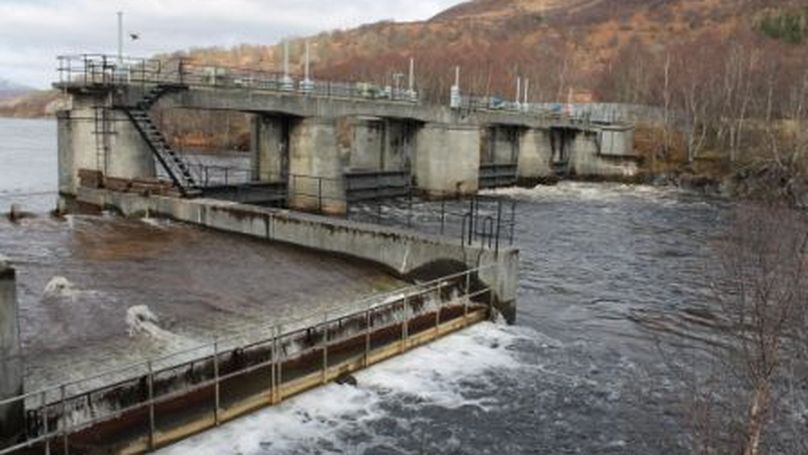The Conon catchment is one of the most hydrolysed river systems in Britain.
All four of the main tributaries of the Conon have been harnessed for large-scale hydro schemes. A total of seven main dams, three smaller dams, 32km of tunnels, 24km of aqueduct, 48km of new roads and six power stations were built with an installed capacity of 116Mw.
The total fall from the highest point at Loch Droma to the last power station is 255 metres, with water passing through no less than three separate power stations on certain parts of the system.
The construction was one of the largest civil engineering works in the Highlands and took from 1946 to 1961 to complete. Two of the dams, Vaich and Glascarnoch, flooded the natural spawning grounds of salmon on the Blackwater River, which is part of the Conon system. To overcome this, a mitigation hatchery was set up and about a million eggs are planted into the Blackwater every year, producing an estimated 35,000 smolts.
With marine survival of salmon now down to between 3% and 5% the need to maximise smolt output and survival has never been more important. Little can be done at sea but if smolt migration can be maximised it will hopefully allow for a greater number of returning fish.
When the hydro schemes were built a lot of effort was put into upstream migration of salmon with Borland lifts being installed. These are effectively small lock systems within the dam, similar to those used to pass boats up a canal system but smaller.
However, the exit of smolts has always been a concern and work was carried out by the North of Scotland Hydro electric Board in the 1950s and 1960s to see if migration could be improved. This mainly involved greater water flow out of the dams or creating directional surface water flow that smolts could follow to the exit.
Smolt tagging work was undertaken on the River Meig in 2015 and this research identified that in that year only 30% of smolts tagged upstream of Meig reservoir were recorded passing through the fish pass at Meig Dam three kilometres downstream. It was found that, at the start of the smolt run, the loss of smolts was not significant but the losses increased as the smolt run went on.
In 2017 Glasgow university undertook further work on the Conon to investigate smolt migration using acoustic tracking technology. Again, the conclusion was that two thirds of the smolts were being lost before they left Meig reservoir and those that did survive suffered significant mortality descending through Loch Achonachie, the last reservoir on the system.
Glasgow university also carried out the exercise on Loch Garve, which is not hydrolysed and noticed a similar but less significant loss. The primary causes of these losses are thought to be predation in the loch or smolts being unable to find the exit.
To try to improve smolt survival rates on the river Bran, another tributary of the Conon, scottish and southern energy, the successors of the North of scotland Hydro electric Board, in the early 1990s built a wolf trap on to the Achanalt barrage which holds back water for the Achanalt power station. The smolts are trapped, tagged and then trucked down past all of the reservoirs and released below Torr Achilty dam to migrate naturally to sea.
As a result of the research on the River Meig smolt trapping was undertaken on the River Bran in 2019 with a count of 5,500 smolts captured last year using two rotary screw traps that are in the region of 25%-30% efficient. An acoustic barrier was also deployed to try to direct smolts into a channel for capture in the traps. The longterm plan is to build a demountable wolf trap on the River Meig to maximise the number of smolts that can be transported past the reservoirs.
The Conon was one of the rivers involved in the Atlantic salmon Trust’s Missing salmon Project and the initial results are interesting, showing high mortality in the river. These results mirror previous research carried out on the Conon for the Beatrice off-shore wind farm consenting process and also the river Meig study.
The cause of the losses needs to be better understood – it may be a natural process that has been happening for thousands of years. More work will be done on the losses next year.
The hydrolysation of the system has led to significant research over the years from various academic institutions and by the Fishery Board and scottish and southern energy, who have taken their responsibilities to fish stocks seriously. Improving smolt migration in hydrolysed systems such as the Conon is important, but it also has to be done in conjunction with habitat improvements in and around key river sections.

